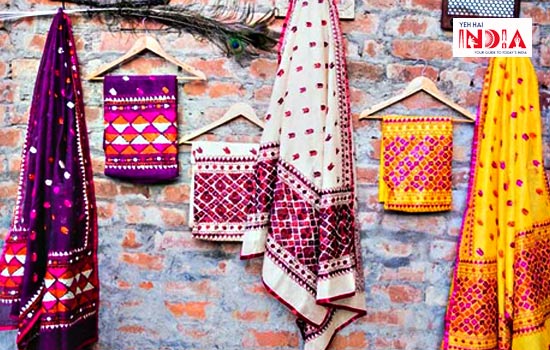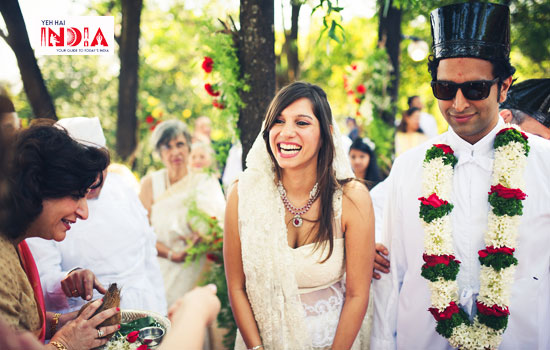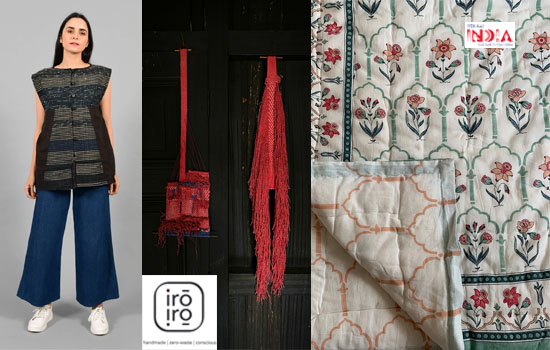What comes to your mind when I say these two words – Colours and Vibrancy?
Lush green fields, heart throbbing music, lip smacking cuisine and desi vibes, yes you guessed it right, it is none other than the state where people are young at heart and always in swing – it’s Punjab.
Punjab is also known for the artwork that arrived from the time immemorial – Phulkari. It is known as the folk embroidery of Punjab.
Meaning
Phulkari is made of two words: ‘Phul’ meaning Flower and ‘Akari’ meaning Shape. Though it means floral work, it even consists of motifs and geometrical shapes. The state popularly believed the birth of a girl child auspicious and that is when the mothers and grandmothers would start embroidering dupattas as a mark of creator of future generations.
In those times, the work was done with real flowers on silk or mulmul for ensuring the longevity. Even today, the Punjabi women create innumerable designs and patterns through their practice and skills of the darn stitch.
Recommended Story – The Blue Pottery of Jaipur – A Beautiful Art in India
History of Phulkari Artwork

The origin of Phulkari artwork has many theories with one such belief being that the artwork was prevalent in various parts of the country back in the 7th century CE though it only survived in Punjab.
Another belief states that this style is derived from Iran where it was called ‘Gulkari’ which means floral work as well.
The earliest reference of Phulkari came in the 18th century in the Punjabi literature where Waris Shah’s version of ‘Heer Ranjha’ describes the wedding attire of the female protagonist with Phulkari embroidery.
The present form however, has been popular since the 15th century.
Phulkari was a product of domestic work done by the women. The fabric used then was ‘Khaddar’ which was hand spun. The cotton was grown throughout and spun into yarn on the charkha (spinning wheel). It was then dyed by the ‘lalari’ (dyer), and woven by ‘jullaha’ (weaver).
There were no pattern designs and embroidery was done on the reverse of the fabric. The techniques were not documented though the widespread happened through the word of mouth and later, each of the regional group came up with their own style.
The embroidery found its way to the abroad in the 19th century even though it was not commercialised. The embroideries made on shawls or ghagras (long decorated skirts) were used as curtains in the European homes. By the end of the 19th century, it reached out to the American and European market along with ‘Baghs’ (a type of Phulkari).
Types of History of Phulkari Artwork
With imagination of each girl being different, you may even witness different designs on a particular Phulkari artwork. Though, with time, many types of Phulkaris have come into existence.
1. Bagh

A style where the whole surface is embroidered. Numerous designs are made through horizontal, vertical and diagonal stitches. The designs are mainly inspired by what embroiderer has witnessed around them.
The designs provided by the kitchen were Mirchi (Chilly) Bagh, Gobi (Cauliflower) Bagh, Dabbi (Metal Container) Bagh, and Belan (Rolling Pin) Bagh.
The scattered work is called ‘Adha Bagh’ (half garden) whereas, the work done with white silk floss which starts in the center and then spreads to the whole fabric is called ‘Chashm-e-Bulbul’.
2. Chope and Subhar
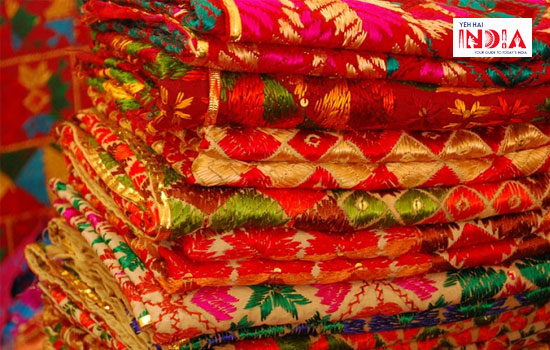
Worn by the brides, ‘Chope’ is embroidered on both the sides of the fabric and traditionally the work is done on red colour with yellow. Here, two panels of the fabric are joined with similar patterns embroidered on both the ends. The motifs embroidered are a series of triangles pointing inwards.
It goes in step-ladder fashion with small squares and only the four sides are embroidered in fine embroidery.
‘Subhar’ on the other hand has a central motif with four motifs on the corners of the fabric.
3. Darshan Dwar
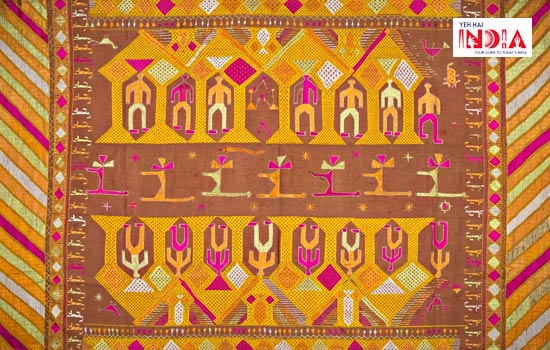
Darshan Dwar has panelled architectural design which was made as an offering. The top end and the pillars have latticed geometrical patterns.
4. Sainchi

Sainchi is a type of Phulkari which draws inspiration from village life and depiction of various village scenes such as a man ploughing, guests drinking sherbet or smoking hookah, or playing chaupar. It even includes themes relating to the chores done by women such as churning milk, grinding wheat, etc.
This is the only style where the outlines are drawn using black ink. It is later filled by embroidering darn stitch. This artwork was popular in Bhatinda and Faridkot districts and was then popularised in and around Ferozepur.
5. Tilpatra
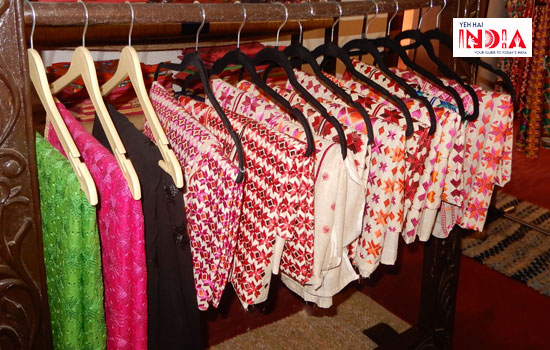
Tilpatra means ‘spreading of the seeds’ and the seed used is ‘Til’ (sesame) which has a decorative embroidery.
6. Neelak
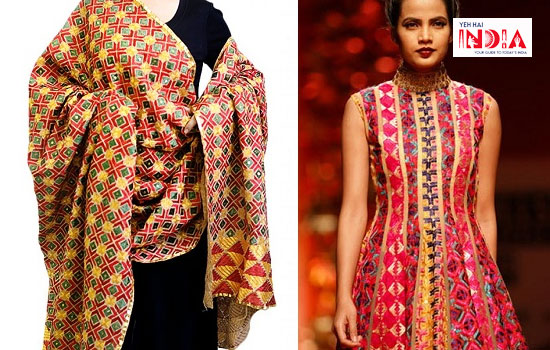
Neelak style is made with black or red background and has yellow or bright red embroidery. The colour of the Phulkari is mixed with metals giving it a distinctive texture.
Recommended Story – Thangka Painting from Ladakh – The meditational Buddhist Artform
7. Ghunghat Bhag
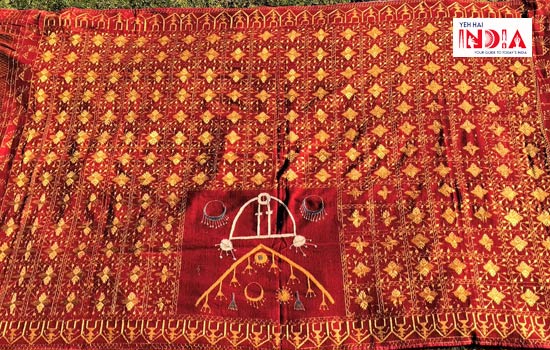
Ghunghat Bagh originated in Rawalpindi and is heavily embroidered around the center on the edge to be worn over the head with the center being pulled over the face forming an embroidered veil.
8. Chhamaas
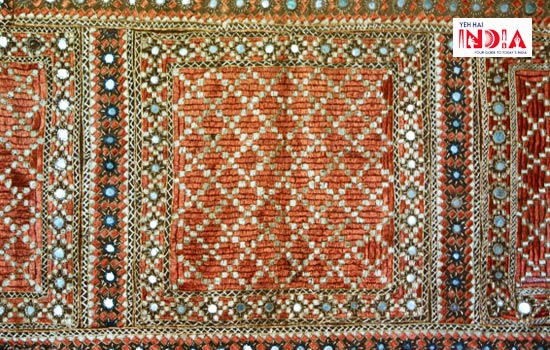
Hailing from Rohtak, Gurgaon, Delhi, and Hissar is the Chamaas Phulkari which has mirrors sewn into the fabric using yellow, grey, or blue thread.
Revival
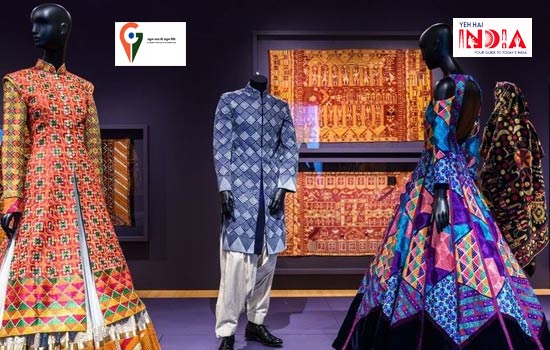
There was a time when 52 types of Phulkaris existed at one point of time though now it has drastically reduced to a handful. Traditionally, women never used tracing blocks though presently, contemporary embroiders cannot put the artwork together without using blocks.
Decreased promotions and no mainstream treatment from the Indian Fashion industry has also caused sharp decline in the preservation of the Phulkari artwork.
After a five year long legal battle, Phulkari was awarded with geographical indication (GI) status in India in 2011. This means only registered traders and manufacturers from the states of Punjab, Haryana, and Rajasthan would be using the term for the traditional craft.
The Patent Information Centre (PIC) of Punjab State Council for Science and Technology issues a logo or a hologram to distinguish the product.
Over the years, the Indian as well as Punjab Government has been continuously working towards the promotion of the Phulkari artwork through training workshops, fairs, and exhibitions.
Modern fashion designers have incorporated this artwork into their designs bringing the traditional and contemporary styles as fusion which has now spread beyond salwar kameez and dupattas to accessories such as handbags, jackets, shoes, table-mats, and so on.
Phulkari being a long and time-consuming artwork is not only straining embroiders but also with the availability of cheap machineries it is slowly taking away the authenticity and economic power. Low remunerations have worsened the situation as many talented embroiders are not ready to work under such unstable economic returns.
There are limited number of books available on Phulkari artwork which is available online or in bookstores though the library at Punjabi University, Patiala offers extensive material. National Crafts Museum has extensive collection of Phulkaris under the Textile Gallery.
Detailed and intricate needlework done in Phulkari demands care which means washing the fabric delicately with hands and ironing on the reverse side of the fabric. Getting the fabric dry-cleaned once in a while ensures the brightness and liveliness.
Elegant though detailed and yet simple artwork demands one more thing which is your attention. So when are you planning to grab this colourful and vibrant piece of artwork?
Also Read – 6 Women Led Startups of India- Breaking barriers


